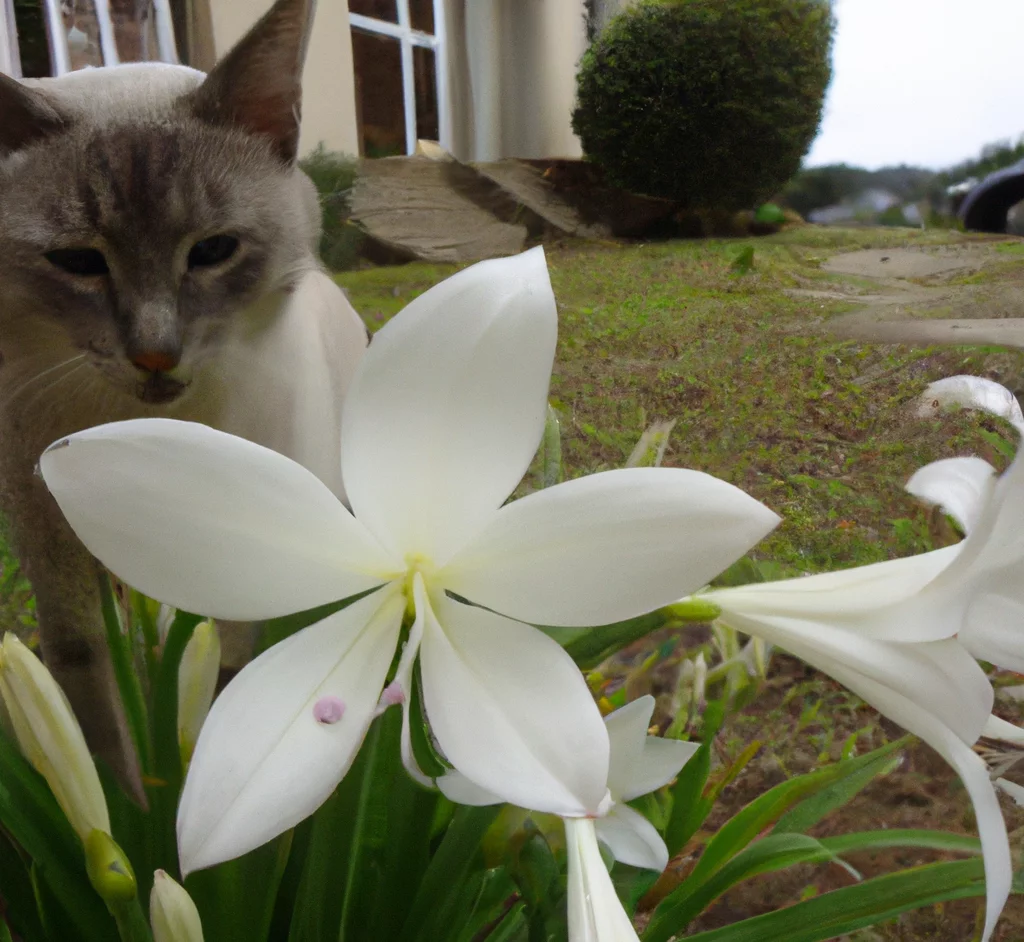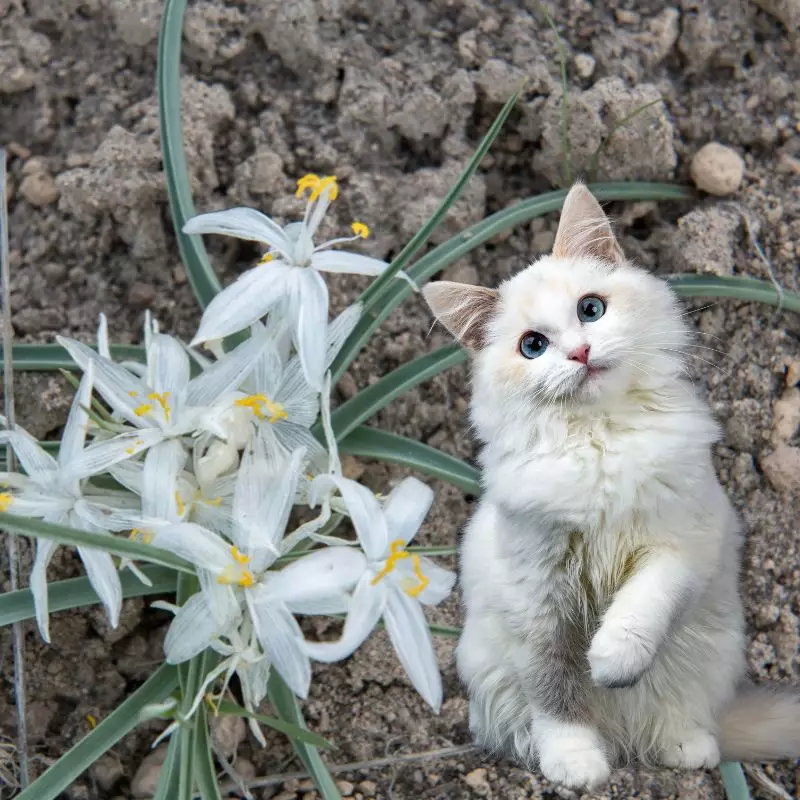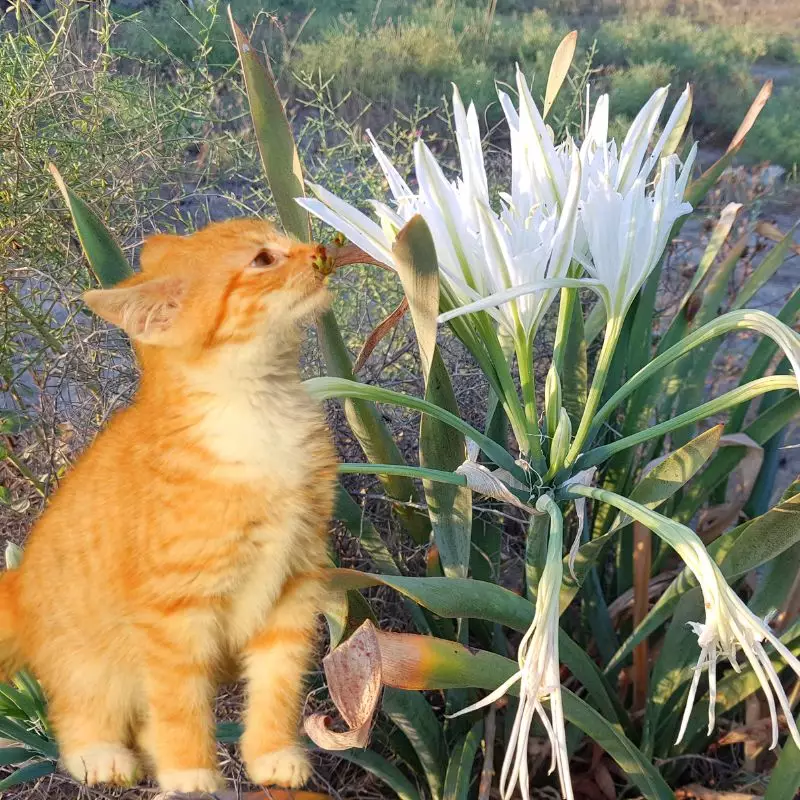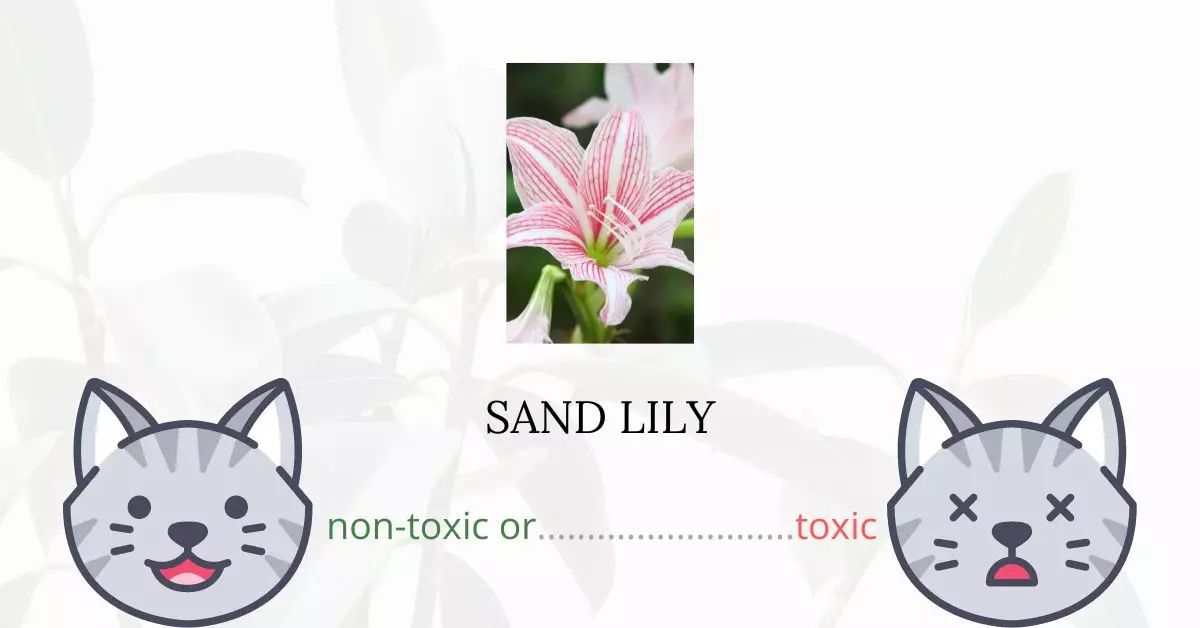Sand Lilies are not toxic to cats. Unlike many true lilies, which can be dangerous, Sand Lilies are considered safe and pose no harm to our feline friends.
This article was written in collaboration with a team of experienced DVMs (doctors of veterinary medicine). With their insights, we aim to provide accurate and up-to-date information on the potential risks associated with various plants, focusing here on Sand Lilies and their effects on cats. Our research included consultation of high-authority sources such as the ASPCA (American Society for the Prevention of Cruelty to Animals) and PetMD to ensure comprehensive coverage.
For those cat owners looking to beautify their environment with plants, Sand Lilies can be a beautiful and safe choice.
Can Cats Eat Sand Lily?

Your feline friends wouldn’t get hurt if they ate any part of this plant. However, ingesting large quantities could give them an upset stomach.
Cats must eat meat, thus their stomachs are not equipped to digest plant matter. If they happen to have indigestion, they can exhibit vomiting and diarrheal symptoms. Once the cat’s body has evacuated the plant materials, the ailments will go away.
What is Sand Lily?

Many of the open montane forests, arid grasslands, and sagebrush deserts in the western United States are home to sand lily plants (Leucocrinum montanum). The fragrant, star-shaped white sand lily flowers on stalks emerging from a basal clump of thin, grass-like leaves make this tough and charming tiny wildflower easy to identify. Direct rhizome sand lily plants grow from is buried deep in the soil. Mountain lily and star lily are other names for sand lilies.
It has no stem and only reaches a maximum height of 10 cm (4 in). It produces tufts of long, narrow leaves with their bases tucked tightly together. The inflorescence is a leafy cluster of flowers with an umbel form. Six white tepals that are roughly 2 cm (0. 8 in) long make up the fragrant flower. The plant produces two different types of pollen in two different populations because it is dimorphic.
Keeping Cats Away From Sand Lily

If your cat keeps attacking your plant, try spraying a mixture of lemon, orange, or lime juice on the leaves. Cats absolutely detest the smell of citrus. Citrus fruit peels can also be preserved by burying them in the ground. This ought should deter them effectively. If this doesn’t work, you can try vinegar as a backup. It is recommended to maintain cotton balls soaked in vinegar in the soil of your plant pot rather than spraying vinegar directly on plants because this can damage them.
Another tactic to deter your cat from approaching your plant is to place a few sharp-edged rocks on top of the soil. To guard against your furry friend’s mischievous paws, make wire covers and store them at the base of your plant.
Plants to Avoid For Your Cats
If you are a cat owner and unsure if the plants growing in your yard are harmful to your cats, check out this list of toxic plants for cats. You can also check our list of non-toxic plants for cats.





